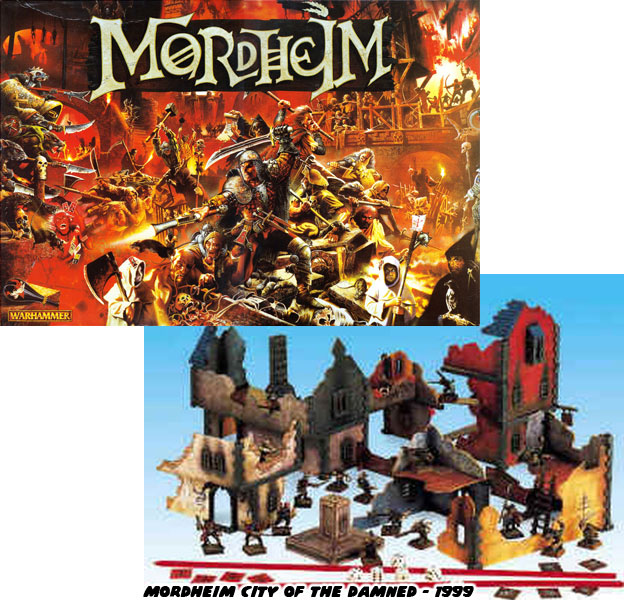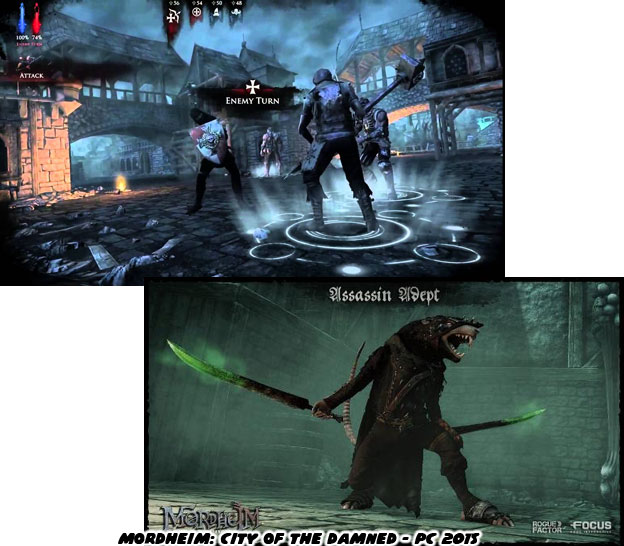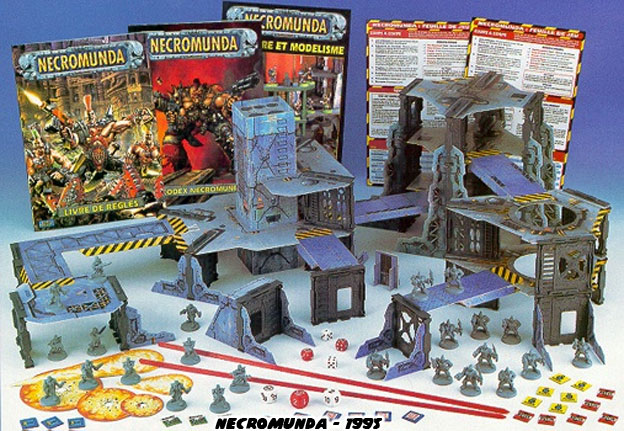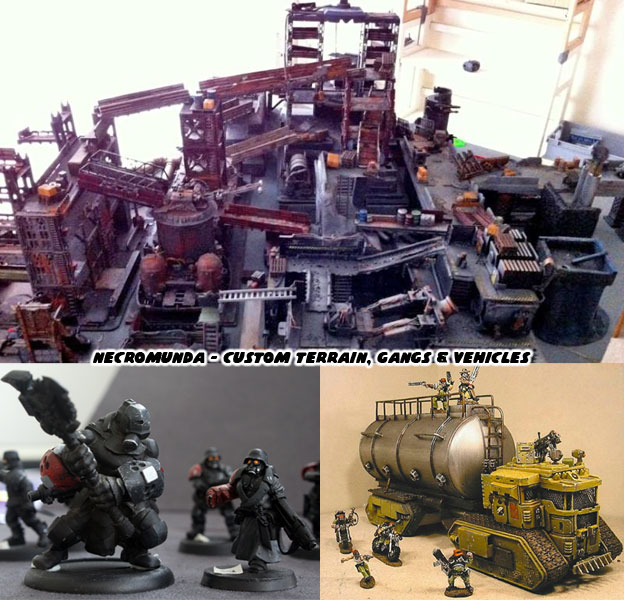
Like the other boxed sets that I have been highlighting on this blog Mordheim was another self-contained experience. Yet this one was unique for the scale that it presented. Instead of recreating enormous battles in the Old World, this was instead focused on recreating one very unlucky city and the warriors or thieves that would try to find their fortune within. Mordheim was an old city and had its share of chaos, ork and other monster incursions. It was the site of a meteor strike that left most of the town destroyed but also scattered pieces of eerie green crystals known as Warpstone throughout. Warpstone could create monsters if left exposed and this was one of the chief resources of the industrious Skaven. The Skaven were a race of rat-men that burrowed under most of the cities in the Old World and even had countless battles in the mountains by burrowing into the kingdom of the dwarfs.
Mordheim was a fascinating place. Those brave or foolish enough to remain all had their reasons. Corrupt politicians, secret prisons, back room deals, warring clans, weapon smugglers, assassins everything went down in Mordheim. Gamers could return again and again to the town and never visit the same scenario twice. The beautiful cardstock tiles printed by Games Workshop could be used to make all sorts of adventures come to life. Those with more modeling practice could create any section of the town and craft a story to go with it. The game had expansion packs and new miniatures released for it and then it faded away.

Focus had been doing a bang-up job adapting the GW titles for the console and PC and in 2015 they brought the world of Mordheim back to audiences. It was as rich and vivid as it had ever been when circulating in the hobby stores. Long gone were the days of measuring rulers and dice. Players could now see magic and combat at work in real time thanks to some highly detailed models. As wonderful a system as Mordheim was there was a precursor to it.
In the far future of Warhammer 40,000 there were of course battles on an infinite number of planets but did you ever wonder what sorts of battles were being fought in the human inhabited planets? The ones that were supposedly "safe" from the touch of Chaos or the intrusion of aliens? There were countless planets like these, they created weapons of war, were rich for filling the ranks of Imperial Guard and various other roles for the Imperium. Yet what about those living on the outskirts? The criminals and power-grabbers in the dark sectors of space were at war too. Except these people were at war over resources and control of the Hive cities. The densely populated cities built one on top of the other for thousands of years. Imagine an industrial version of the favelas of Brazil.

Necromunda was another great system by Games Workshop that told the stories of these Hive cities and the various gangs that fought for turf. The studio created rules which helped bring elevated combat into the universe of 40K. The studio also developed a series of plastic and cardstock terrain pieces that could be assembled and laid out in an infinite number of ways.
Just as with Mordheim the players were told to spend some time here. Get settled in this world and get their hands dirty. This dystopian world was impossible to navigate single-handedly. Audiences had to assume the role of an entire gang in order to really make it out alive. As with the early GW systems they were also encouraged to create their own gangs and build their own legacy.

Hobbyists went crazy with the idea of customizing their own worlds, gangs and objectives for Necromunda. It was and remains one of the high-points for Games Workshop storytelling. Very few systems that begin life in a box ever find there is room to grow outside. Necromunda was one of those games that truly became something unique when audiences made it their own. Sadly of all the classic systems that I've mentioned over the past few weeks this was the only one that hadn't gotten a PC remake, or at least an announced remake. Perhaps Focus or another publisher was waiting for the right time to announce that the gang wars were about to explode again. Games Workshop was in a league of its own when it came to creating entertainment out of dystopian society. One of their hottest systems also embraced the D-I-Y mentality of Necromunda. But like Adeptus Titanicus it was also a response to another company and another hot system. We will take a look at this game in the next blog. As always if you enjoyed this blog and would like to sponsor me please visit my Patreon page and consider donating each month, even as little as $1 would help make better blogs and even podcasts!

No comments:
Post a Comment